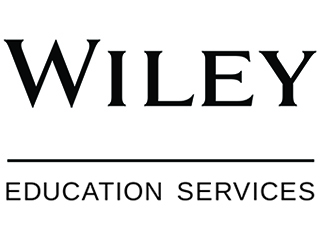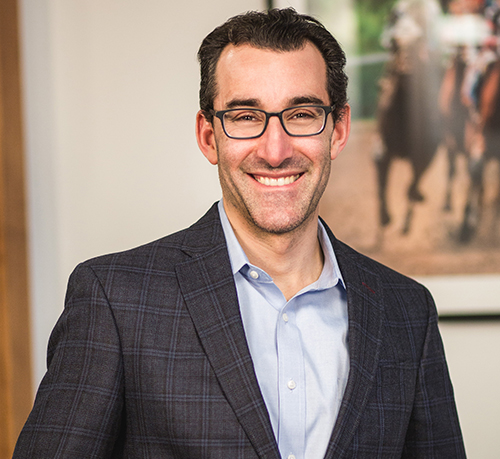Next week, WCET hosts it’s annual Leadership Summit. This year the topic is: Workforce Partnerships that Work: Creating Public-Private Partnerships that Serve Students, Institutions, Employers, and Communities. Summit attendees will attend sessions focused on higher education institutions can work with employers to create programming focused on helping students be more career ready and skilled for the workforce.
As the Summit draws near, we were thrilled to hear from our friends at Wiley Education Services, a WCET Sponsor, on addressing the skills gap with their partners.
There’s still time to register for the Summit! Join us in Newport Beach, CA June 4 – 5!
Thank you to Matt and Todd for our great post today!
Enjoy the read and enjoy your day,
– Lindsey Downs, WCET
 In an ever-changing workplace, the type of learning and skills that college students need to be successful is evolving, according to a study by the Association of American Colleges and Universities (AAC&U). With a global talent shortage expected to reach 38-40 million by 2020, employers now look to candidates without four-year degrees to find desired skillsets. A survey of 600 US employers conducted by Learning House, a Wiley brand and Future Workplace found that two-thirds would consider applicants with a professional certification or a certificate of completion in place of a college degree, and 47 percent would hire a candidate with a Massive Online Open Course (MOOC) degree. Additionally, only half of respondents have a pipeline of talent with the right skills to fill current and future roles, adding to the pressure on job placement. The study concluded that a majority of employers do not feel that recent college graduates are well prepared, despite graduating seniors regarding themselves proficient. The data show colleges need support to better align expectations of students and employers to address the widening skills gap.
In an ever-changing workplace, the type of learning and skills that college students need to be successful is evolving, according to a study by the Association of American Colleges and Universities (AAC&U). With a global talent shortage expected to reach 38-40 million by 2020, employers now look to candidates without four-year degrees to find desired skillsets. A survey of 600 US employers conducted by Learning House, a Wiley brand and Future Workplace found that two-thirds would consider applicants with a professional certification or a certificate of completion in place of a college degree, and 47 percent would hire a candidate with a Massive Online Open Course (MOOC) degree. Additionally, only half of respondents have a pipeline of talent with the right skills to fill current and future roles, adding to the pressure on job placement. The study concluded that a majority of employers do not feel that recent college graduates are well prepared, despite graduating seniors regarding themselves proficient. The data show colleges need support to better align expectations of students and employers to address the widening skills gap.
 In November 2018, Wiley Education Services acquired Learning House to further enhance its services that help higher education institutions and employers educate and train the generation coming into the workforce. The acquisition provides university and college partners with a wider range of services to assist in bridging the gap between education and employment. Matt Hillman and Todd Zipper, Co-Presidents of Wiley Education Services and Learning House, a Wiley brand, recently sat down to discuss the changing workplace and the need to create new opportunities for colleges, employers, and learners in all career stages.
In November 2018, Wiley Education Services acquired Learning House to further enhance its services that help higher education institutions and employers educate and train the generation coming into the workforce. The acquisition provides university and college partners with a wider range of services to assist in bridging the gap between education and employment. Matt Hillman and Todd Zipper, Co-Presidents of Wiley Education Services and Learning House, a Wiley brand, recently sat down to discuss the changing workplace and the need to create new opportunities for colleges, employers, and learners in all career stages.
Is the current attention on skills gaps based on evidence or hype?
Hillman: Research conducted by Learning House and Future Workplace found that employers are open to considering other credentials outside of a traditional degree – an indicator that higher education is under pressure and the market is responsive to innovative alternatives. At the same time, there continues to be a significant gap between recent graduates’ perceptions of their proficiency in several areas compared to employers’ expectations of their work-readiness, as noted in National Association of Colleges and Employers (NACE) Job Outlook Survey. Fewer than half of employers believe recent graduates are proficient in standardized skills like “professionalism/work ethic” and “oral/written communications.” As the U.S. economy grows, more and more jobs require at least a bachelor’s degree and these skills are essential for success in the workplace. Yet even in the U.S. there is still disparity in access to higher education. It won’t happen overnight, but Wiley is committed to working with educators to deliver the tools and content necessary to close the gaps in skills and access, especially among non-traditional learners.
Zipper: We keep hearing that the workforce coming out of college is not prepared for employers’ expectations around competencies. Post-secondary education happens in many ways and at different rates. Skill development throughout one’s career is becoming more important as our economy changes. We believe universities and colleges have an essential role to play in solving for skills gaps – and employers do too. The latest 2018 Employer Research sponsored by AACU indicates employers believe college degrees are worth the investment and they have more confidence in colleges and universities than the general public.
What new opportunities are emerging to bridge skills gaps?
“Anywhere there is a mismatch between the skills employers need and how students and employees are trained, we need to bridge that gap.” ~ Matt Hillman
Hillman: Skills development for current employees also presents challenges for employers, especially in technology roles. A Learning House survey identified that 74 percent of employers invest in upskilling employees, but half report that they don’t have the talent in house for training and development and it’s difficult to find external resources. What is surprising is that only half of employers have ever collaborated with colleges to bring in subject matter experts and create education programs that are responsive to workplace needs. The best long-term solution – and greater opportunity for universities and colleges – is increased collaboration.
More communication between universities and corporations will help. A growth area for university services is something we call “bridge education”– a strategy that helps schools address skills gap issues and helps corporations discover and develop the talented people they need with higher education partners. Anywhere there is a mismatch between the skills employers need and how students and employees are trained, we need to bridge that gap.
“Skill development continues to be important beyond university graduation as our economy changes.” ~ Todd Zipper
Zipper: The need for software development talent continues to grow. We use the example of software developers because there’s such a big supply-demand imbalance, and it’s such a critical hard skill. We’re seeing lots of opportunity with programs around coding bootcamps to address this talent shortage. We’re helping universities serve people who are seeking to learn but aren’t planning to enroll in a degree program. An example is the bootcamps delivered by the Software Guild, Wiley’s online and in-person training program brand for people pursuing careers in software development. Face to face full-time bootcamps run 12 weeks and part-time online programs are available—both formats deliver employable skills to students.
But these future developers also have other learning needs, for example, around management training and development. That’s what our university partners get fired up about.
How do you look at data to identify opportunities?
Hillman: Our partners need accurate data to make decisions and measure performance of their programs. Universities often don’t have the technology, time, and data science talent available to get into the data they need, interpret what is salient, and inform decisions.
Data is also essential in digital marketing, an increasingly important channel for higher education and continuing education marketing. Marketing can increase the pipeline of talent coming into the programs that get attention from recruiters. Program decisions and brand marketing all rely on data.
Zipper: Higher Education needs to think broadly about metrics. Schools often look at a metric like credit hours. Let’s say they had 5% growth in credit hours delivered year on year, but at the same time they could be down 15% in new student starts – particularly in an area where there is a growing demand for new skillset, like software development and data science.
Ultimately, schools work with us to grow, seeking out opportunities together as partners. For instance, our data showed that for several of our partners, there was a breakdown between enrollment and student starts. We identified that tuition planning was not fully addressed by these programs, meaning students didn’t have what they needed to make decisions around financing, and so they left. Once we added a service to address that student concern, we showed that the acceptance to registration rates went up.
What higher education developments do you predict we’ll see in 2019?
Hillman: I think technology will continue to improve the way colleges communicate with their students. Over the past few years, there has been an increased focus on developing “customer service” capabilities because students have expectations around easy access to information and quick answers to their questions. Today’s students are very busy and communication styles are changing. Often times if a student needs an answer, sometimes he can’t – or doesn’t want to – talk to somebody in person and turns online.
Today’s students are very busy and communication styles are changing. Often times if a student needs an answer, sometimes he can’t – or doesn’t want to – talk to somebody in person and turns online.
This year, I think we’ll start seeing artificial intelligence and situational, automated workflows incorporated into platforms to better meet students’ needs and free up staff to focus on improving overall student experiences.
Zipper: I agree. I think we’re going to see more and more technological solutions that care for the student journey and the student experience, and this includes cost. The cost of education and student debt is still out of control. We need to keep building solutions that can bring down the cost of education. Done the right way, artificial intelligence provides a way to provide the student with more personalization for an individualized learning experience, resulting in better outcomes at reduced costs. Thinking back ten years ago, students had to walk to the bursar’s office to find out how to pay their bill – a time-consuming, unpleasant experience. That certainly has changed with online payment options. The student experience gets better and better each year. And Wiley is here to help!

Matt Hillman
Co-President
Wiley Education Services and Learning House, a Wiley Brand

Todd Zipper
Co-President
Wiley Education Services and Learning House, a Wiley Brand
Closing the Skills Gap, the Learning House and Future Workplace findings from their survey of 600 US employers is available for download. Additionally, research on “Online College Students 2016: Comprehensive Data on Demands and Preferences” shares the results of a survey of 1,500 prospective, current and recently graduated fully online students. Findings from the NACE 2018 Job Outlook Survey were reported in Inside Higher Ed. Also, see Key Findings from the 2018 Employer Research Fulfilling the American Dream: Liberal Education and the Future of Work sponsored by American Association of Colleges and Universities and the 2015 Report, Falling Short? College Learning and Career Success.

 In an ever-changing workplace, the type of learning and skills that college students need to be successful is evolving, according to a
In an ever-changing workplace, the type of learning and skills that college students need to be successful is evolving, according to a  In November 2018,
In November 2018,  Today’s students are very busy and communication styles are changing. Often times if a student needs an answer, sometimes he can’t – or doesn’t want to – talk to somebody in person and turns online.
Today’s students are very busy and communication styles are changing. Often times if a student needs an answer, sometimes he can’t – or doesn’t want to – talk to somebody in person and turns online.


1 reply on “Addressing the Skills Gap and New Opportunities in Higher Ed”
[…] Addressing the Skills Gap and New Opportunities in Higher Ed – 5/31/19 […]